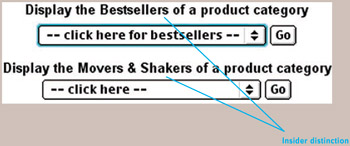Blooper 44: Insider Jargon
| < Day Day Up > |
Blooper 44: Insider Jargon
Speaking geek is using computer jargon inappropriately. Computer jargon isn't the only kind of jargon. Every business-plumbers, real-estate agents , florists, grocers, airlines, taxicabs, doctors , caterers, you name it-has its own specialized jargon for communication between people in the profession.
Many sites on the Web confuse visitors by using the jargon of industry "insiders," even though the site's intended users aren't industry insiders and don't know the jargon. For example, a San Francisco real-estate website might describe an apartment as a "5R boxcar w/ illegal inlaw down," [3] which wouldn't mean much to most apartment seekers.
Both speaking geek and insider jargon are the result of website text being written by the wrong people. They differ in who those wrong people are. For speaking geek, the culprits are the site's engineers . For insider jargon, the culprits are the business experts-marketing, sales, purchasing-who know the site's business inside and out. If they fill the site with their industry's insider jargon, most customers won't understand it.
HauteAtHome has a website that lists its offered dishes and lets customers place orders (Figure 6.22). The website lists the available dishes in tables, and for each dish has an SKU number. Did you know that "SKU" is a retail-industry term for "stock keeping unit?" Probably not. Most catalogs would label this "item number" or "item code." This might seem minor, but envision yourself on the phone with a customer-service agent asking you for the "SKU" of the product you ordered but didn't receive.

Figure 6.22: www.HauteAtHome.com (Jan. 2002)-Lists of foods available for ordering include a number labeled "SKU," an insider term. Most customers don't know or care what it means.
Another e-commerce site, zBuyer.com, provides a menu of all its product categories and a button for displaying the "Bestsellers" in the chosen category (Figure 6.23). That seems useful. However, zBuyer confuses the issue by also providing another menu, right under the first, for displaying the "Movers & Shakers" in a specified category. You might wonder what the difference is between a "Bestseller" and a "Mover & Shaker." If you were a zBuyer insider, you'd know that "Bestsellers" are the most popular products, while "Movers and Shakers" are products whose popularity is rapidly changing (presumably rising ).

Figure 6.23: www.zBuyer.com (Feb. 2002)-Makes a distinction between the "Bestsellers" and the "Movers & Shakers" in a product category. Unless you work at zBuyer, you probably don't know the difference.
The best example of insider jargon is from Connectix.com (Figure 6.24). To submit a question to the customer-service department, Connectix customers must "create a new incident." "Incident" is an industry term for a customer problem report requiring a response. [4] Maybe Connectix customers will understand that and maybe they won't, but there is worse jargon here. To create an incident, customers have to indicate which product their incident is about. Connectix products are listed in two separate menus, labeled "Fee products" and "Free products." Customers probably assume this refers to whether they paid for the product or downloaded it for free, but they quickly find that the products in the two menus don't match that assumption. In fact, "fee" versus "free" is Connectix customer-support jargon for whether a fee is charged for service for that product or not. Obviously, these terms are based on Connectix's point of view, not their customers'.

Figure 6.24: www.Connectix.com (Feb. 2002)-To ask a customer-service question, customers have to find their product in one of two menus- fee and free. "Free Products" doesn't mean the product is free. It means support is free. "Fee Products" means a per-incident fee is charged for support.
Avoiding the Blooper
The methods for keeping your site free of insider jargon are similar to those for keeping it free of geek speak.
First, the site's vocabulary should be based on that of its intended users, not the vocabulary of experts in your site's business. This means you have to study representatives of your hoped-for users and learn their vocabulary. That vocabulary should be used to construct a site lexicon, which in turn should be used to govern the terminology that appears in the website.
Second, experienced technical writers-not experts in your site's business-should write, test, and maintain all text on the site that isn't contributed by users. That includes instructions, messages, link labels, field labels, command names , mouse-over pop-ups, and any other text that appears on the site.
[3] It means the apartment has five rooms arranged along a long central hallway, and a separate studio apartment in the basement for which no building permit was obtained.
[4] Another common software-industry term for this is "action requests " (ARs).
| < Day Day Up > |
EAN: 2147483647
Pages: 128